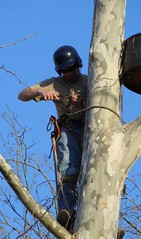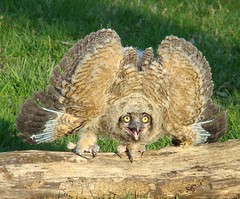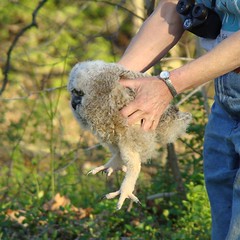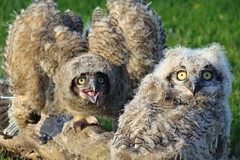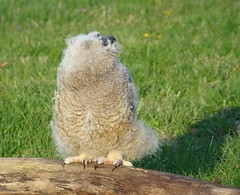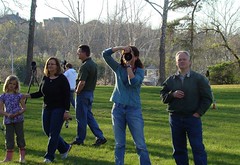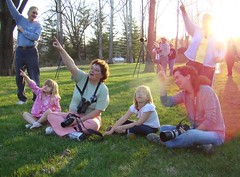Way back in March at the Adams County Bird Syposium, a raffle was drawn for a chance to see the banding of some peregrine falcon chicks in Aberdeen. A friend of Mary Ann's won, but since she was already involved in the banding of the chicks in Cincinnati, she gave the chances to Mary Ann. And that's when I became her new BFF.
(If you don't remember who Mary Ann is, she is in this post. And this post. And this post. She has no blog. Poor dope.)
No, I wasn't using her just for the banding opportunity. Well, maybe 10 percent. Okay, 20.
I mean, we're talking peregrine falcons here. Baby ones. My totem bird. My favorite.
In all seriousness, Mary Ann is a fun and tolerant new birding companion and I was so thrilled that she let me come along.
But honestly, I wonder at the agonized howls that would have ensued from my mouth if she hadn't.
So with an hour-long drive in my falcon-mobile, we arrived.
In fact, let's just get to the photos, huh?
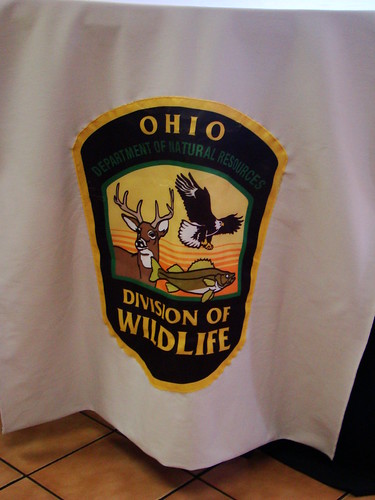
The Peregrine Falcon project is administered by the Ohio Department of Natural Resources' Division of Wildlife.
And this is the lady who travels all over the state banding the babies:
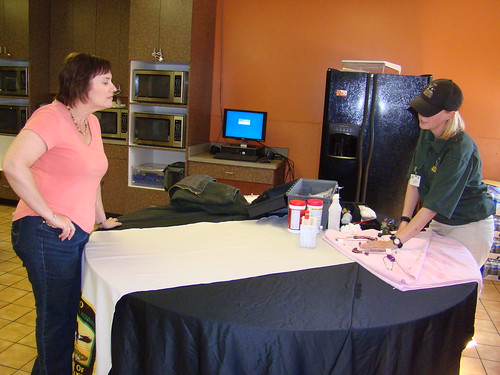
(Jennifer Norris with our Mary Ann)
From the ODNR website:
"Along with several other Midwestern states, Ohio began introducing the birds in 1989. Several pairs were released in cities between 1989 and 1992. Last year in Ohio, 19 nesting pairs of peregrine falcons are estimated to have successfully hatched and fledged 64 young. An estimate was made because actual counts were unavailable due to site access for some nests.
Federal funds for the peregrine falcon project and other wildlife diversity efforts of the Division of Wildlife are provided through the State Wildlife Grant Program, which targets species with greatest conservation need.
The division's peregrine falcon management program is funded by the sale of cardinal license plates, the division’s new Ohio Wildlife Legacy Stamp and contributions to the state Wildlife Diversity & Endangered Species Check-off Fund. "
Quick note about bands:

These dual-colored bands will show up at a distance and the letter/number combination can easily be read. They are read from top to bottom, so the one on the left would read "black over red, 16Y".
If you ever see a banded peregrine falcon, here's a handy chart to tell you where it came from:
Red Captive bred
Black/red bicolor Eastern United States
Black/green bicolor Eastern United States
Blue Tundra Peregrines
Black/blue bicolor Tundra or Anatum captured off the breeding grounds or subspecies unknown
Green Peale's Peregrines
Black Anatum Peregrines
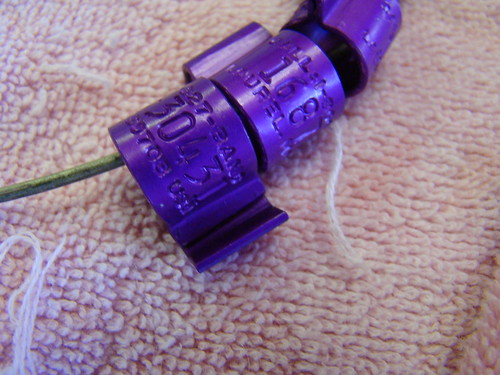
Another band, in purple, is fitted on the other leg. These are USFW bands.
We found out that a local sixth grade class (I did a program at that school!) came up with names for these chicks. Since Mary Ann, myself and one other woman were the only audience members, we each got to choose which falcon would get which name.
And here are the babies (all females, by the way):
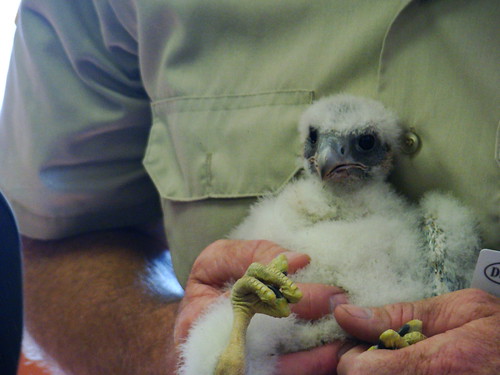
Skylar
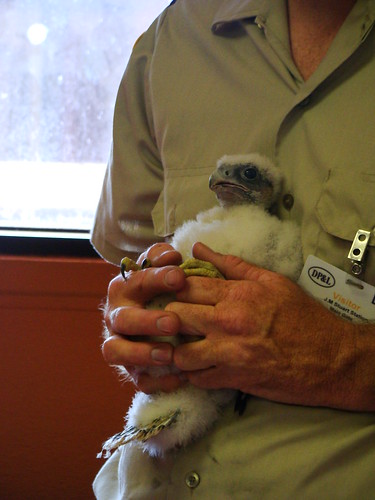
Flyte
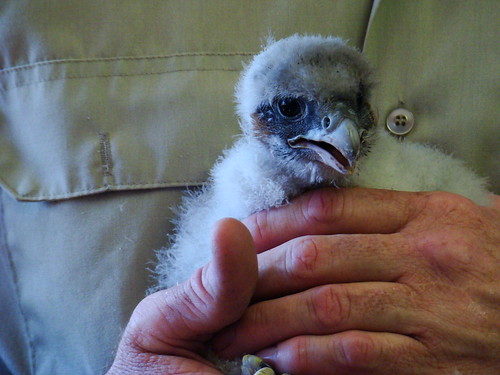
Epic
(The largest and likely the oldest of the three. This is the one I named!)
Aside from the bands, parasites and blood samples were collected:
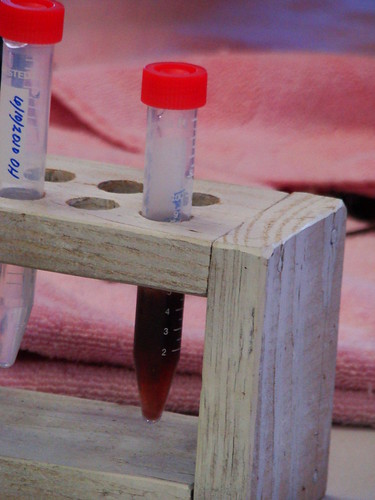
Peregrine chicks start out life not with that majestically long, rudder-like tail, but instead sport a stubby butt that looks like it belongs on a chicken:
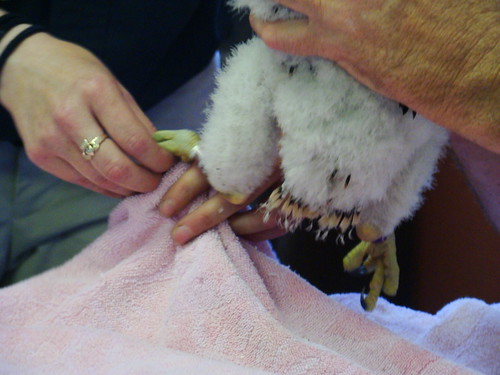
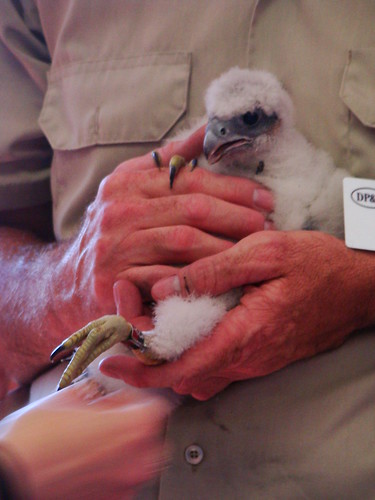
Check out the limp toes (this is a defense mechanism).
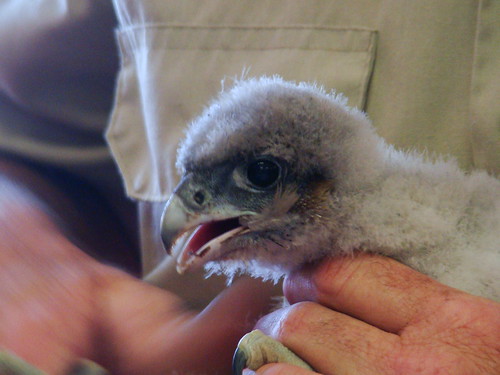
Epic had the remains of breakfast stuck in her beak (see the tan feather?).
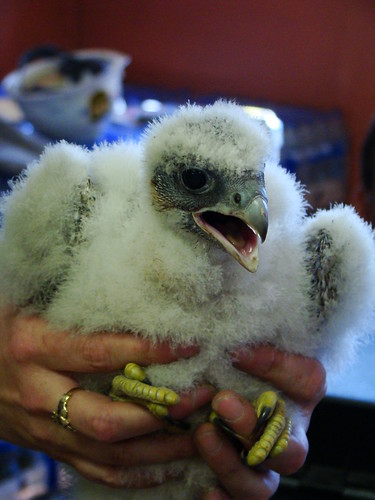
Let's just soak in the adorableness of that face for a minute......
These babies will grow up to be the race cars of the sky, blue-gray thunderbolts that split the air with their speed and strength. But this day, at 3 weeks old, just fuzzy white perfection.
This last photo makes my heart do a drum roll.
Those toes, the same type of toes that curl around my thumb and forefinger on a regular basis, that clench my hand when the owner needs reassurance, the toes that take food from my hand and have a firm hold on my heart....
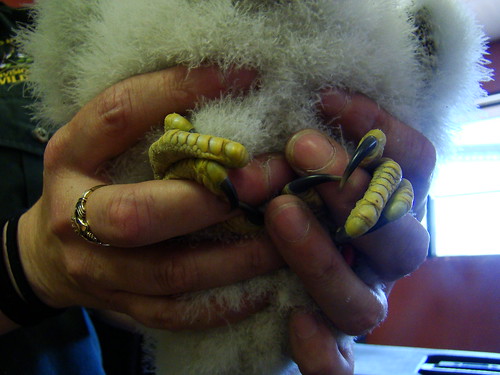
Good luck, little ones. Go forth and multiply.

